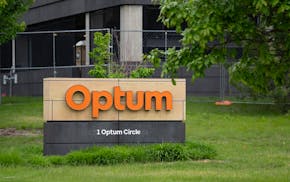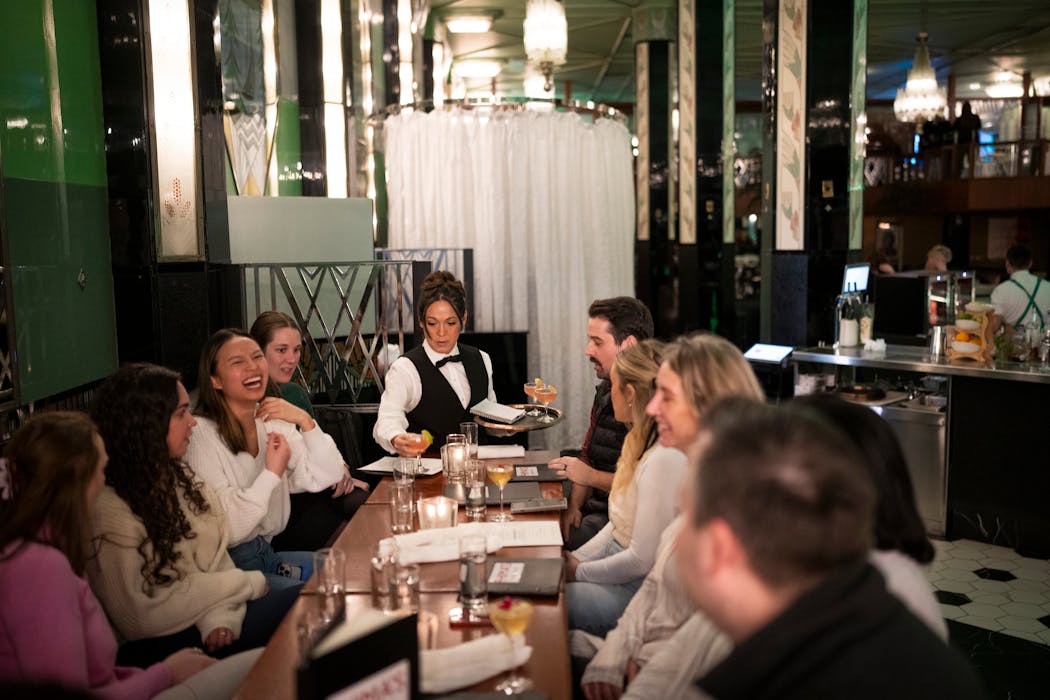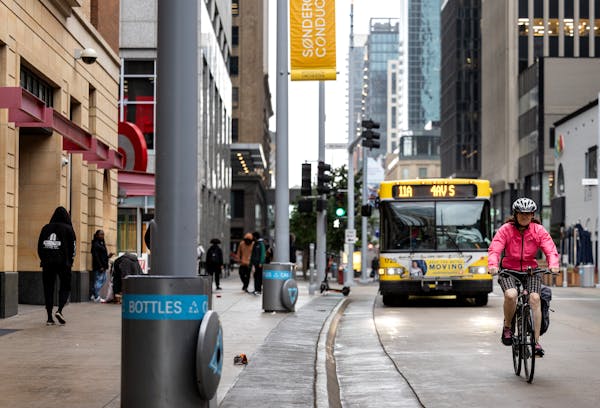A new report from the Minneapolis Foundation is continuing the constant reimagining of downtown.
Just this past June, a task force Mayor Jacob Frey convened suggested various improvements to Nicollet Mall, from making it a pedestrian-only thoroughfare to allowing people to walk around with alcoholic drinks.
Those ideas are part of the foundation's all-encompassing blueprint released Wednesday. It prescribes a mixture of living, working and playing to transform the city's central business district into a once-again vibrant destination after the pandemic sucked the office and entertainment life from the area.
The report's authors see the North Loop, Mill District and Downtown East as successful "villages" that offer a model for the downtown core, where office vacancies are still at record highs and only about 65% of workers have returned.
"All we simply have to do is to try to take these live-and-work neighborhoods a couple of blocks from the office core and incorporate what they're doing," said R.T. Rybak, the foundation's head and Minneapolis mayor from 2002-13.
One of the report's authors, Sarah Harris, called it an "action plan."
"There are a lot of people doing great work, and we're not trying to get in the way," she said. "But it's about, how do we put it all together?"
Frey said some of the report's recommendations are already in the works: a new city position coming next year to "activate" downtown, a push for a bus-free Nicollet Mall as a 24-hour entertainment district and commercial buildings retro-fitted with apartments, as is the case with the Northstar Center office building.
"I think we'd all like downtown to come back in one big burst," he said. "It will be a series of little bursts. You just have to feel the momentum each day."
But progress feels slow to restaurateur David Fhima, whose eponymous restaurant is in the urban core and whose Mother Dough Bakery is in Capella Tower. He welcomes new ideas but wants a bigger push for workers to be downtown more often.
"Is this a cop-out instead of calling corporations back? Are we afraid to do that?" he said. "The easiest route is for people to come back."
Minneapolis Downtown Council President and Chief Executive Adam Duininck agreed but said policymakers need to be prepared for hybrid work to remain. He favors the report's action steps.
Minneapolis City Council Member Elliott Payne of Ward 1 supports having a strategy for downtown plus similar efforts for the Northeast Minneapolis Arts District and other urban hubs.
"I think we need to think about what live-work-play looks like across the city, either for people who exclusively work at home or who are hybrid," he said.
Moving ideas from recommendations to reality and implementing tangible results requires the participation and buy-in from a variety of stakeholders, including building owners, city officials and residents, said Lynette Dumalag, founder of Sitio Purok, a Twin Cities commercial real estate brokerage, and chair of the Urban Land Institute Minnesota.
"There are some opportunities that can be had," she said. "But you need to have good partners."
Those partners often include those managing the regulatory process that often limits a building's uses, for example, if people can live in an area zoned for commercial use only. Property owners have to be willing to reimagine how their buildings are used and to participate in the often complicated and time-consuming conversion process.
And there has to be enough money to pay for those conversions, which are sometimes more costly than starting from scratch.
The Northstar Center conversion into apartments was financially feasible only because the developer, Sherman Associates, was able to assemble a complex finance package that included low-income housing and historic tax credits.
"It really does depend on if there's enough will to do this," Dumalag said. "It will require a lot of coordination from both the public and private sectors. … Hopefully, these reports are a way to see if there's enough interest."
To expedite growth downtown, the report suggested examining various tax-driven funding models and focusing more on adding residential and entertainment options. That means refilling street-level storefronts and skyway suites with businesses centered on financial and medical services, retail, entertainment and food production.
And to make downtown more inviting, the report proposed asking artists to "create spaces and environments to break down barriers between neighborhoods," launching annual communal dinners on Nicollet Mall, creating spaces that are more inviting for youth and requiring new development to incorporate more trees and grass into its design.
Aware of downtown's stigma as a dangerous destination, the report advocated for a safety-in-numbers approach to reduce unwanted and illegal behavior but also emphasized supporting personnel and organizations trained to "identify when someone's actions are aggressive or threatening."
Earlier this year, the Star Tribune reported that in 2023 areas of downtown and north Minneapolis experienced a drop of nearly 20% in violent crimes and in gunfire of more than 30%. Frey previously said the Downtown West district had gone 26 consecutive weekends without a shooting. In 2022, the record was three weekends.
Efforts to energize and entertain downtown's guests "should be multiplied, with additional and predictable funding," the report stated, with a single entity responsible for the activation of year-round programming around pop-up markets, live concerts and pickleball.
Minneapolis' recovery fell toward the bottom in a ranking of midsized cities in North America, finishing 64th out of 66 cities analyzed.
According to researchers at the University of Toronto and University of California-Berkeley, downtown Minneapolis has only regained 56% of its economic and social activity when comparing the beginning of March to mid-June 2023 to the same period in 2019.
But Minneapolis boosters pointed to more frequent recent successes, such as Taste of Minnesota relaunching in downtown and record hotel bookings during Taylor Swift's concerts in June on Pride weekend.
"People say to me all the time, 'Nobody comes downtown.' Tell that to people jammed in restaurants or trying to get into parking ramps," said Rybak from his downtown office. "It's not back to where it was pre-pandemic, but we're not starting from zero, here."

Delta hiked fares for solo travelers, until Twin Cities travel experts caught the change

In first speech back, UnitedHealth's new CEO pledges to review hot-button issues

A child had measles at Mall of America, concerning state health officials who don't know source

Ramstad: Gov. Walz, things are not getting done in Minnesota



